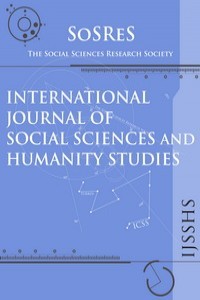INTER-CLUSTER PIPELINES: THE DRIVING FORCE OF KNOWLEDGE CREATION AND ECONOMIC DEVELOPMENT
INTER-CLUSTER PIPELINES: THE DRIVING FORCE OF KNOWLEDGE CREATION AND ECONOMIC DEVELOPMENT
Clusters, Pipelines Knowledge Creation,
___
- Andersson, A. (1985), Creativity and Regional Development. Papers in Regional Science, 56(1):5-20
- Barabási, A.L. (2003), Linked, How Everything is Connected to Everything
- Else and What It Means for Business, Science, and Everyday Life. London:Penguin Books Ltd.
- Bathelt, H., A. Malmberg, and P. Maskell (2002), Cluster and Knowledge: Local Buzz, Global Pipelines and the Process of Knowledge Creation. DRUID Working Paper, No.02-12
- Burt, R. S. (1992), Structural Holes. Massachusetts:Harvard University Press
- Carrington, P., J. Scott, and S.Wasserman (2005), Models and Methods in Social Network Analysis. New York:Cambridge University Press
- Granovetter, M. (1973), The Strength of Weak Ties. American Journal of Sociology, 78(6):1360-1380
- Gertler, M. S. (2003), Tacit Knowledge and Economic Geography of Context, or the Undefinable Tacitness of Being (There). Journal of Economic Geography, 3:75-99
- Guilliani, E. (2005), Cluster absorptive capacity, Why do some clusters forge ahead and others lag behind? European Urban and Regional Studies, 12(3):269- 288
- Jack, S. (2005), The Role, Use and Activation of Strong and Weak Network Ties: A Qualitative Analysis. Journal of Management Studies, 42(6)
- Krugman, P. (1991), Geography and trade. Massachusetts:MIT Press
- Malmberg, A., Ö. Sölvell & I. Zander (1996), Spatial Clustering, local accumulation of knowledge and firm competitiveness. Geografiska annaler, 78 B(2):85-97
- Marshall, A. (1920), Principles of Economics. London:Macmillan
- Maskell, P., H. Bathelt & A. Malmberg (2004), Temporary Clusters and Knowledge Creation: The Effect of International Trade Fairs, Conventions and Other Professional Gatherings. SPACES 2004-04
- Owen-Smith, J. and WW. Powell (2004), Knowledge networks as channels and conduits: The effects of spillovers in the Boston biotechnology community. Organization Studies, 15:5-21
- Perry-Smith, J. E. & C. E. Shalley (2003), The social side of creativity: A static and dynamic social network perspective. Academy of Management Review, 28:89- 106
- Porter, M. E. (1998), On Competition. Boston:HBS Press
- Rosenberg, N. (1982), Perspective on technology. Cambridge: CUP
- Sorenson, O. (2003), Social Networks, Informational Complexity and Industrial Geography. In Fornal, D. and C. Zellner (eds.), The role of Labour Mobility and Informal Networks for Knowledge Transfer, Amsterdam:Kluver Academic Publishers
- Trippl, M., F. Todling & L. Lengauer (2009), Knowledge Sourcing Beyond Buzz and Pipelines: Evidence from the Vienna Software Sector. Economic Geography, 85:443-462
- Başlangıç: 2009
- Yayıncı: Sosyal Bilimler Araştırmaları Derneği
PROFESSIONAL CONTENTMENT IN A RESEARCH UNIVERSITY: A CASE STUDY
Hamidah Abdul Rahman, Maisarah Mohamed Saat, Azizah Rajab
INNOVATIONS AT ORGANISATION VIA CREATIVITY OF EMPLOYEES
ANALYZING TOURISM POTENTIAL AND DETERMINING STRATEGIES: CASES OF SOME CITIES IN TURKEY
Yavuz OZDEMİR, Huseyin BASLİGİL
ELT STUDENT TEACHERS’ COMPETENCE FOR TEACHING LANGUAGE SKILLS: A QUALITATIVE EXPLORATION
TURKEY’S COMPETITIVENESS IN TERMS OF DETERMINANTS OF FDI: A COMPARISON WITH HUNGARY AND POLAND
FREEWAY SEGREGATION, COMMUNITY SCHOOLS AND THE URBAN POOR
Pat WİLLİAMS-BOYD, Mary Margaret SWEETEN
